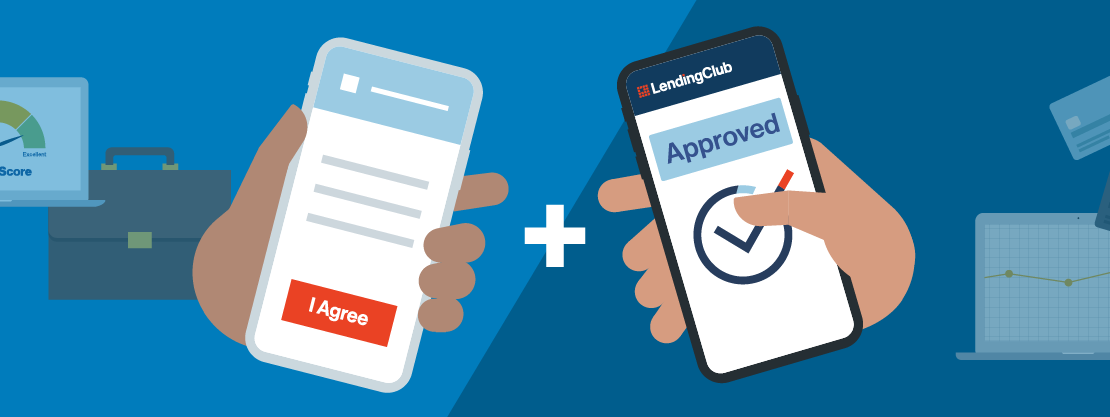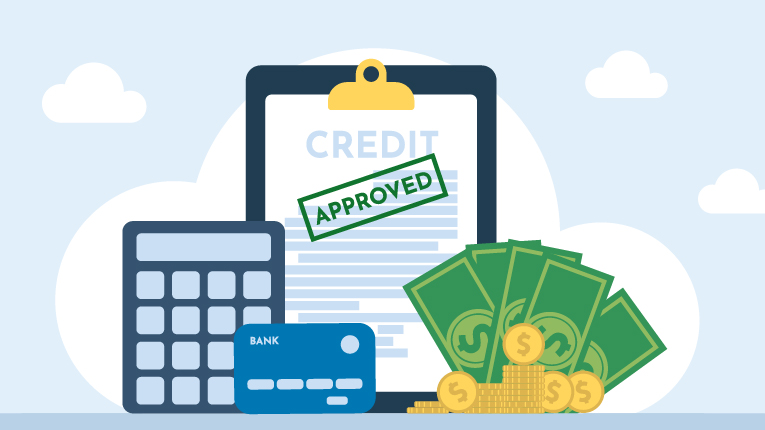How to Apply for a Joint Personal Loan

There are many reasons to consider a joint personal loan, including sharing the payment obligations, securing better financing terms, and improving your odds of approval. So, if your credit history is holding you back from getting favorable interest rates and terms on your own, having a co-borrower could help you qualify for a personal loan. However, there are some pros and cons to consider before you apply.
Here’s what you need to know about how to get a joint personal loan, how they work, and what to consider before applying.
What Is a Joint Personal Loan?
A joint personal loan, also sometimes called a joint-applicant loan, is a personal loan with two co-borrowers.
When you and your co-applicant submit an application, the lender will review both incomes and credit histories to determine your eligibility and loan terms. This arrangement can be beneficial if two people want to share the loan funds and both have good credit.
But the joint nature of the loan doesn’t stop there. If approved, both borrowers are fully responsible for paying back the debt. That is, even if a co-borrower was added to improve their chances of obtaining the loan and plans to pay back the debt on their own, both borrowers are responsible if the primary borrower misses a payment.
Note that a joint loan with two borrowers can be different than a co-signed loan, depending on the lender.
As with personal loans with just one borrower, you can generally use the funds for most purposes, such as debt consolidation, home improvements, vacation and wedding expenses, financial emergencies, and more.
Some lenders may also have restrictions on how the funds can be used, prohibiting usage for educational, business, or investment purposes, for buying or exchanging cryptocurrency, or for engaging in illegal activities. Make sure to review the fine print before applying to understand whether the loan will meet your needs.
Where to Find Joint Personal Loans
Not all lenders that offer personal loans allow the applicant to add a co-borrower to their application, so it’s important to review your options to ensure that you can do what you want with a co-borrower.
You can find joint personal loans at most banks and credit unions and with online lenders like LendingClub Bank, where you can check your rate without affecting your credit score. As with any financial decision, it’s important to shop around and compare multiple options to determine the right fit for you.
How to Apply for a Joint Personal Loan
Once you’ve settled on a lender, visit its website to get started. Here are some steps to help guide you through the process of getting a personal loan:
Check your rate: If the lender has a prequalification feature, review your initial offer based on a soft credit check, which won’t impact your credit score. This may or may not match your final offer, but it can give you an idea of what you’re eligible for.
Start the application: When you start the application process, be sure to select the joint application, so you can add details for yourself and your co-applicant. You’ll typically need to provide your names, dates of birth, Social Security numbers, contact information, income and employment information, and more.
Provide documentation: In some cases, lenders may require additional documentation, such as pay stubs, tax documents, or bank statements, to verify the information in your application.
Review the loan terms: Depending on the lender, you should receive a credit decision within a few days. If you agree to the loan terms, you will proceed with entering into the agreement. Loan funds are typically disbursed within a week, but in some cases, it can be as little as a few hours after approval.
Start making payments: You should receive information from your lender about how to start making monthly payments. It’s generally best to set up automatic payments to avoid accidentally missing one.
Pros and Cons of Joint Personal Loans
There are both advantages and disadvantages to applying for a personal loan with a co-borrower, and it’s crucial that you understand both to determine if it’s the right choice for you.
Pros of Joint Personal Loans
Could help with eligibility: If your credit history is relatively new or you’ve made some missteps with your credit in the past, adding a co-applicant to your loan can help improve your chances of getting approved for the financing you need.
Could improve your loan terms: Lenders will typically determine loan terms based on both applicants’ financial and credit situations, so adding a co-borrower could make it easier to qualify for better terms, even if you can’t get them on your own.
Could help you share the financial burden: If you’re borrowing money with another person, applying for a joint loan allows you to more easily share the loan funds and the monthly payments.
Could help both borrowers’ credit: As you make on-time payments, a joint personal loan can help improve both borrowers’ credit scores over time.
Cons of Joint Personal Loans
Could damage the co-borrowers’ relationship: No matter what the agreement is for sharing payment responsibility, regardless of who actually uses the funds, both borrowers are equally responsible to the lender to timely repay the full amount of the loan. So if one co-borrower doesn’t meet their obligations with the loan, it could have a negative impact on the relationship.
Could damage both borrowers’ credit: The loan will show up on both borrowers’ credit reports, which means that if either borrower misses a payment, it could damage both credit histories and scores.
Payments could be complicated: If both borrowers agree to pay down the debt, they’ll need to come up with an arrangement to share payments, which could get complicated.
Could affect both borrowers’ debt-to-income ratios: The joint loan will show up on both borrowers’ credit reports, along with its balance and monthly payment. This could affect the debt-to-income ratio, or the percentage of gross monthly income that goes toward debt payments, for both borrowers, which could affect their ability to obtain credit in the future if they need it.
Frequently Asked Questions
Joint personal loan vs. co-signed loan: What’s the difference?
While they seem similar on the surface, there’s one key difference between a joint personal loan and a co-signed loan. With a co-signed loan, the co-signer is agreeing to pay back the loan if the primary borrower doesn’t, but they don’t have any claim on the loan funds or the items purchased with the funds.
In contrast, a co-borrower on a joint personal loan has equal rights to the loan proceeds and anything those funds are used to buy.
You may opt for a co-signed loan instead of a joint loan if you don’t want the co-signer to have any claim on the funds or the items or services you purchase with them. Alternatively, you may consider a joint loan if you both plan to use the funds together.
Can you get a joint personal loan if one borrower has bad credit?
Maybe. A borrower with a damaged credit history stands a better chance of qualifying and receiving a loan when applying together with a co-borrower who has a good credit history. However, it may make sense to leave a borrower with bad credit off a loan application if the other can get approved on their own.
Can you apply for a joint personal loan with LendingClub Bank?
Yes. You can apply for a joint personal loan with a co-borrower at LendingClub Bank. If you’re not sure you’ll qualify on your own, you might want to consider applying for a joint personal loan along with someone else, as long as they have a stronger credit profile that will improve your chances of approval.
You May Also Like












